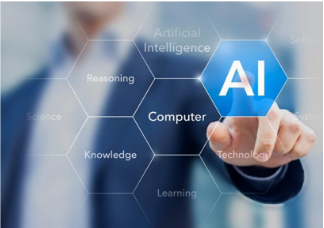Context:
A recent study by the Yale School of Environment has warned about the substantial and expanding environmental footprint of Artificial Intelligence (AI) technology.
Key Findings
- A few of the ChatGPT-3 responses alone can consume up to half a litre of water, illustrating the substantial water demands of AI computing systems.
- AI computing systems need large amounts of water to keep the equipment functional. The bigger the AI system, the larger the water requirements.
- Findings indicate that in 2022, Google alone consumed nearly 20 billion litres of freshwater for cooling its data centres.
- Both Google and Microsoft witnessed significant spikes in water usage, with Google experiencing a 20% increase and Microsoft’s consumption rising by 34% compared to the previous year.
- The strain on freshwater resources is poised to intensify, particularly in regions like India.
- AI technology also contributes to direct carbon emissions. However, accurately quantifying the carbon emissions associated with each prompt or platform remains a challenge.
- The world hosts approximately 9,000 to 11,000 cloud data centres, with more under construction, collectively consuming a remarkable amount of electricity.
- Projections from the International Energy Agency suggest that by 2026, the electricity consumption of these data centres could reach up to 1,000 terawatts, roughly equivalent to Japan’s current total electricity usage.
- Most tech companies, in the absence of standardized reporting or regulations, have either provided arbitrary data or withheld specific information regarding their AI’s environmental footprint.
Impact of AI Resource Consumption:
- AI’s growing integration into the economy demands treating it as an energy-consuming factor. Otherwise, it can hinder progress towards Sustainable Development Goals (SDGs).
- The AI industry could be using up as much energy and resources as a country the size of the Netherlands, intensifying resource competition
- Tech companies require clean, bacteria-free water for cooling, competing with water used for essential tasks like cooking and drinking.
About Artificial intelligence
- The term ‘AI’ was coined in 1956 by John McCarthy.
- Artificial intelligence or AI, refers to technology that empowers computers and machines to mimic human intelligence and problem-solving skills.
- Specific applications of AI include expert systems, natural language processing, speech recognition and machine vision.
- Today, it serves as an Umbrella term covering a spectrum of technologies, ranging from robotic process automation to physical robotics.

Initiatives to Regulate AI
- US Executive Order on AI Safety: The US President signed the first AI executive order on October 30, 2023, directing federal agencies to ensure ethical AI development and mitigate deployment risks.
- UK AI Safety Summit and Bletchley Declaration: The Bletchley Declaration focused on assessing and managing risks posed by advanced AI systems.
- Global AI Risks Initiative by CIGI: Initiated by the Centre for International Governance Innovation (CIGI). It Identifies global risks of autonomous AI systems.
- Indian Prime Minister’s Call for a Global Framework: The Prime Minister highlighted AI risks such as deepfakes and AI-driven weapons and called for a global framework to deal with the issue.
- The IEC (International Electrotechnical Commission) and ISO are collaborating on releasing the world’s inaugural report on AI sustainability standards
- China adopted the first nationally binding regulation on AI
Way Forward
- Standardized Reporting: Mandate tech firms to transparently report AI’s environmental impact, ensuring accountability.
- Regulatory Frameworks: Enforce regulations to monitor and curb AI’s resource usage, aligning with sustainability goals.
- Technological Innovation: Invest in R&D for greener AI solutions, reducing environmental footprint while maintaining performance.
- Circular Economy Approach: Embrace circular economy principles in AI manufacturing and disposal to minimize waste and resource use.

